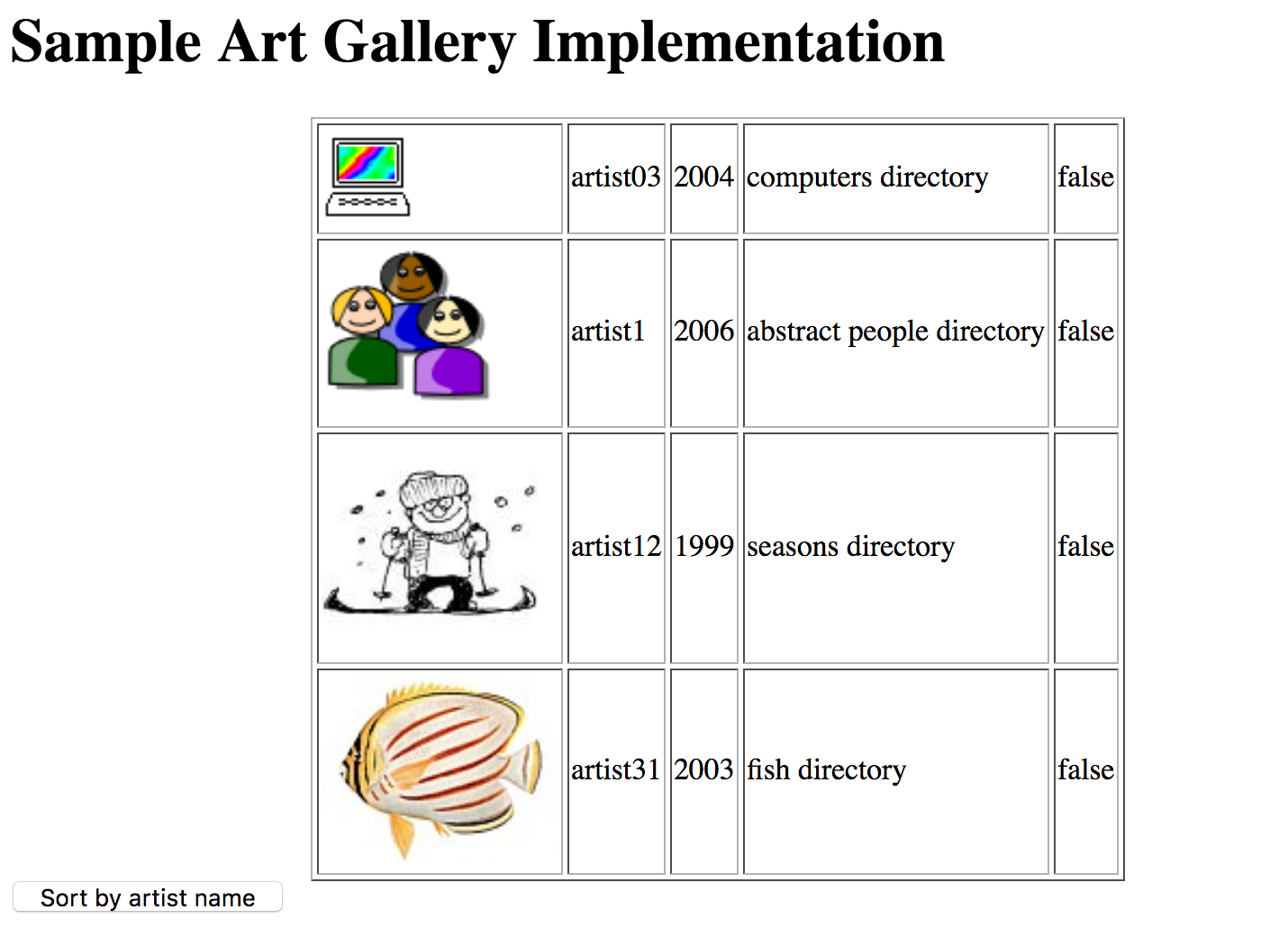Art Catalog: Sorting
Alyce Brady, 2019, based on the previous Address Book
project
Kalamazoo College, Kalamazoo, MI
In previous mini-labs we have been developing an Art Catalog web page.
A useful feature is
the ability to sort the artworks alphabetically by artist name. In today's
lab, we will develop a sorting function and then
integrate it into the art catalog project.
Sorting Numbers and Strings
Start by implementing a simple selection sort that works on numbers and
strings, similar to the one we discussed in class,
taking advantage of the swap and findMinIndex
functions from the previous mini-lab. If you developed those functions
in another web page, copy them into the HEAD of your Art Catalog web page.
Exercise 1 - Selection Sort
- Complete the following selection sort function, using the
swap and findMinIndex
functions. You should not copy code from the
body of those functions into this function; instead, this
function should include calls to swap and
findMinIndex.
function selectionSort(theArray)
{
}
-
Test your function. Since the comparison operators "<" and ">"
work for both strings and numbers, your sort function should work for
arrays containing either. For example:
var numbers = [0, -3, 22, 8];
selectionSort(numbers);
alert(numbers);
var strings = ["Tom", "Dick", "Harry", "Angelina"];
selectionSort(strings);
alert(strings);
Sorting Art Catalog Entries
As it stands, the sort function you developed above will not
work on an array of art catalog entries. This is because the comparison
operators "<" and ">" are not able to correctly compare two
art catalog objects. What would it mean for one art catalog object to be
"less than" another? Alphabetical order of the artist names? Numerical order
of the dates? JavaScript has no way of knowing which we want.
Fortunately, this is easily addressed.
Exercise 2 - Sorting Art Catalog Entries
-
Rename the
function
findMinIndex to findMinimumName
and selectionSort to sortByName. Modify
the sortByName function so that it
calls findMinimumName. Modify findMinimumName
so that wherever it was directly copying or
comparing array entries, it will now assign or compare the artist
attributes of those entries.
In other words, all references to array[i] become
array[i].artist.

-
Add a Sort button on your page where you want it to appear. (But not
within the
script section of your page; the code to create
a button is HTML code.)
This button should have the
attribute
onclick="sortByName(myArray); buildTable(myTable, myArray)"
as well as appropriate name, id and value attributes.
(myTable should be the id of your table object (without
quotation marks), and
myArray should be the name of the variable holding your array
of catalog entries.)
-
Test your sort button. If everything is working as it should,
clicking the button should cause the table of art catalog entries to be sorted
alphabetically by artist name.
You may look at the page on
grading
criteria for Mini-Labs 7 - 9 and Lab 4 to see the breakdown of
points given for this lab and the previous mini-labs.
If you have time...
If you have time, you can get a head-start on one of the tasks in
Programming Project #3: sorting by date.
Define a function similar to sortByName that sorts catalog
entries by date rather than by artist name, and create a second sorting
button so that a user has the option to sort the catalog by artist name or
by date.
